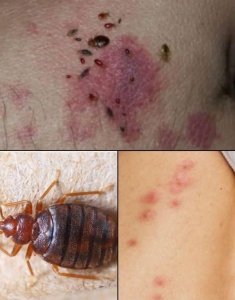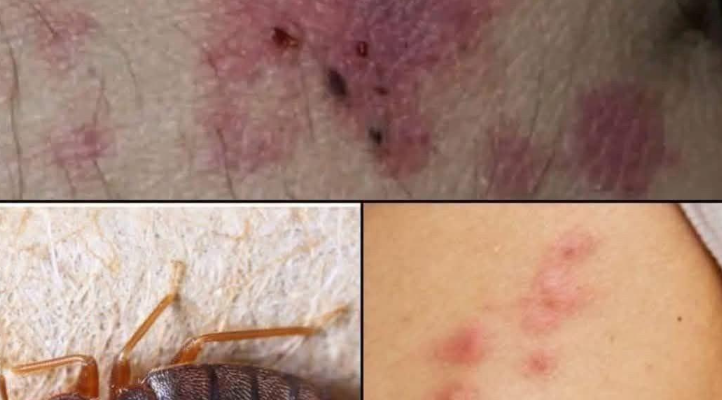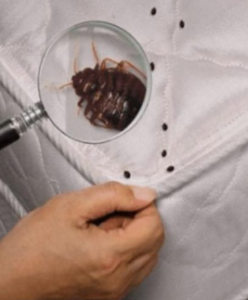 🛏️ Bedbug: Easy Ways to Get Rid of Them at Home
🛏️ Bedbug: Easy Ways to Get Rid of Them at Home
Bedbugs are tiny, reddish-brown insects that feed on the blood of humans and animals while they sleep. Once they’ve invaded your home, they can be extremely hard to get rid of without taking proper steps. But don’t worry—this guide walks you through practical, effective, and affordable ways to get rid of bedbugs at home, without panic.
🐛 1. Understanding the Enemy: What Are Bedbugs?
-
Size: About the size of an apple seed (5-7 mm).
-
Appearance: Flat, oval-shaped, brown before feeding and reddish after.
-
Habits: Nocturnal, hiding in mattress seams, box springs, headboards, furniture crevices, baseboards, even behind wallpaper.
-
Bites: Often appear in a line or cluster, itchy and red.
-
Lifespan: About 4–6 months, but they can survive for months without feeding.
Knowing your enemy is step one: they’re not a sign of uncleanliness. They travel via luggage, clothing, used furniture, or visiting guests.
🔍 2. Identifying a Bedbug Infestation
Before treatment, confirm you actually have bedbugs. Look for:
-
Live bugs: Check mattress seams, box spring edges, and cracks in the bedframe.
-
Exoskeletons: Bedbugs shed skin 5 times before adulthood.
-
Rust-colored stains: Dried blood or bug feces on sheets or walls.
-
Musty odor: In large infestations, bedbugs produce a distinctive smell.
-
Bites: Usually on arms, neck, or face. Red, itchy welts in a zigzag or line.
If you’re unsure, place interceptor traps under bed legs or use a flashlight and magnifying glass to inspect at night.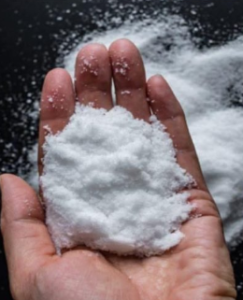
🧼 3. Declutter and Clean the Area
Bedbugs love hiding in clutter. Start by:
-
Clearing the space: Remove everything from under the bed and around sleeping areas.
-
Bagging textiles: Place bedding, clothes, stuffed animals, and curtains in sealed plastic bags.
-
Washing: Launder in hot water (at least 120°F/49°C) and dry on high heat for at least 30 minutes. Heat is a proven bedbug killer.
Anything you can’t wash—like books or shoes—can be treated in other ways (see below).
🔥 4. Use Heat to Kill Bedbugs
Heat is your best DIY weapon.
-
Steam cleaners: Use a high-temperature steamer (above 130°F/54°C) on mattresses, baseboards, and furniture. Move slowly and cover crevices.
-
Black trash bags in sun: For items like shoes or stuffed toys, seal them in black trash bags and place in direct sunlight for a few hours.
-
Clothes dryers: Run items through a high-heat dryer cycle even if they’re clean.
Bedbugs die at 113°F if exposed for 90+ minutes, and at 122°F within minutes.
❄️ 5. Cold Treatment (Optional)
Cold works, too—if done right:
-
Freezer: Put small items in a freezer set to 0°F (-18°C) for at least 4 days.
-
Ensure items are sealed in airtight plastic to prevent moisture damage.
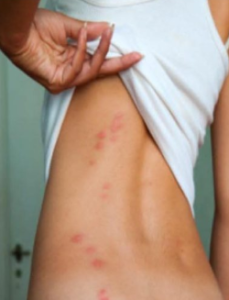
🛏️ 6. Vacuum Everything Thoroughly
Vacuuming won’t kill bedbugs—but it helps remove them.
-
Vacuum the mattress, box spring, bedframe, floor, walls, and baseboards.
-
Use the crevice tool to reach deep corners.
-
Immediately place the vacuum bag in a sealed plastic bag and discard it outside your home.
Repeat this process daily during treatment.
🧴 7. Apply Safe Bedbug Treatments
You can use several over-the-counter or natural products:
🧂 Diatomaceous Earth (DE)
-
A fine powder that kills bugs by drying them out.
-
Sprinkle it along baseboards, mattress edges, and cracks.
-
Use food-grade DE, not the pool-grade version.
-
Leave for several days, then vacuum.
💊 Silica Gel
-
Crush silica gel packets into a fine powder.
-
Works similarly to DE—kills via dehydration.
-
Apply in similar fashion.
🧪 Rubbing Alcohol (Isopropyl 91%)
-
Spray directly on visible bugs.
-
Be cautious: it’s flammable, and doesn’t provide lasting protection.
🔨 Commercial Sprays
Look for products labeled:
-
“Kills bedbugs on contact”
-
“Residual protection”
-
Approved by EPA or local pest authorities.
Natural sprays with essential oils (like clove, tea tree, or lavender) are less effective but may help in small areas or as repellents.
🛑 8. Avoid These Common Mistakes
-
Don’t throw out your mattress unless it’s completely unsalvageable—it just spreads the bugs.
-
Don’t spread DE or sprays too thickly—bedbugs will avoid it.
-
Don’t rely on foggers (“bug bombs”)—they push bedbugs deeper into hiding and are largely ineffective.
-
Don’t stop too soon: Keep treating for at least 4–6 weeks after you last see bugs or bites.
🛡️ 9. Protect Your Bed (And Sanity)
Once cleaned and treated, seal your sleep area:
-
Encase mattress and box spring in bedbug-proof zippered covers.
-
Place interceptor traps under bed legs to catch any stragglers.
-
Keep bed pulled away from the wall.
-
Tuck in all bedding, and don’t let blankets touch the floor.
This isolates your sleeping area and helps detect any remaining bugs.
📅 10. Follow-Up Is Crucial
Bedbugs lay 200–500 eggs during their lifetime. These hatch in 6–10 days—so follow-up is critical:
-
Repeat vacuuming and steaming weekly for 6–8 weeks.
-
Continue monitoring traps.
-
Reapply DE or natural powders after each cleaning.
-
If you spot new bites or live bugs, treat the area again immediately.
Persistence is your greatest weapon.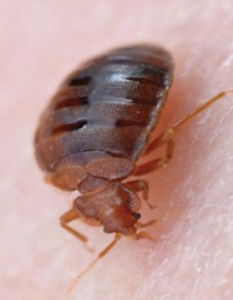
👨🔧 11. When to Call a Professional
DIY methods work well in light to moderate infestations. But if:
-
You keep seeing live bugs after 6+ weeks,
-
Bites persist,
-
Or bugs are found in multiple rooms…
… it’s time to call a licensed pest control professional.
They may use:
-
Heat treatment (raising home temp to 130°F for several hours)
-
Professional-grade insecticides
-
Whole-home monitoring
Yes, it can be pricey—but it’s more effective and faster for severe infestations.
✅ 12. Prevention Tips
Once you’re bedbug-free, keep it that way:
-
Don’t bring home used furniture or mattresses without careful inspection.
-
After travel, immediately wash and dry all clothing on high heat.
-
Use luggage encasements or store bags away from the bedroom.
-
Inspect hotel beds before sleeping—look for black stains, live bugs, or musty odor.
🧾 Final Checklist: DIY Bedbug Battle Plan
✅ Confirm infestation
✅ Clean and declutter
✅ Wash/dry everything on high heat
✅ Steam and vacuum daily
✅ Apply DE or silica
✅ Encase mattress
✅ Use bedbug traps
✅ Monitor and repeat weekly
✅ Call a pro if needed
💤 In Conclusion
Getting rid of bedbugs is doable at home—but it takes effort, time, and consistency. The most powerful weapons are heat, vacuuming, isolation, and follow-up. Don’t rely on a single spray or trick; instead, use a comprehensive plan and stick with it.
With diligence, you can reclaim your bed, your sleep, and your peace of mind—no more itching, no more midnight paranoia.
